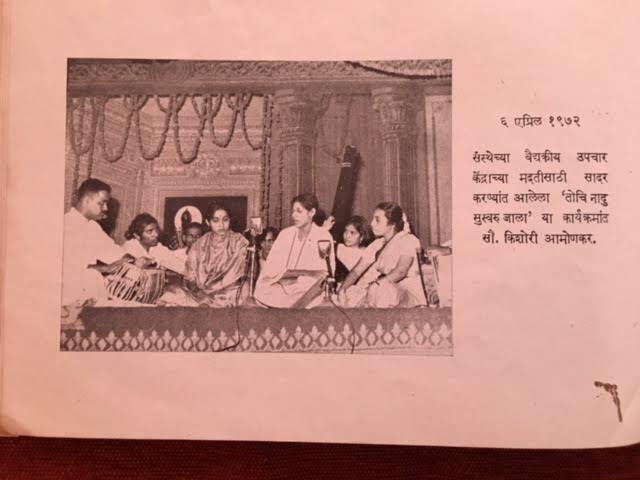Dr. Sylvia Karpagam
 Large organizations working on human rights and development programs have a massive amount of resources and the luxury of separate departments for each aspect of administration and program implementation. These organisations are often proverbial ‘ivory towers’ that maintain strict overt and covert codes of gate-keeping that either allow a warm and welcoming access or a rigid and immovable barrier to entry.The traditional inmates of these ivory towers often possess a strong sense of entitlement– a hardened belief that they ‘deserve’ not just to be in their current locations, but at much senior positions and deserving of much more personal glory. These inmates share a jolly camaraderie and mutual self-love that comes from occupying equivalent social locations.
Large organizations working on human rights and development programs have a massive amount of resources and the luxury of separate departments for each aspect of administration and program implementation. These organisations are often proverbial ‘ivory towers’ that maintain strict overt and covert codes of gate-keeping that either allow a warm and welcoming access or a rigid and immovable barrier to entry.The traditional inmates of these ivory towers often possess a strong sense of entitlement– a hardened belief that they ‘deserve’ not just to be in their current locations, but at much senior positions and deserving of much more personal glory. These inmates share a jolly camaraderie and mutual self-love that comes from occupying equivalent social locations.
Of late, however, there is a growing justifiable demand from communities, not to mention overt pressure from international donors, partners and sister organisations, for affirmative action in these organisations – a pressure which cannot be as easily ignored as it has successfully been for the last several years.
Since the curious business of affirmative action cannot now be entirely kept at bay, the creative, nuanced and perplexing process of devious avoidance begins. What role does devious avoidance play in the implementation of affirmative action? It unravels in manifold ways.
First of all, affirmative action oftentimes begins and ends on paper. Those organisations that can get away with claims of ‘no suitable candidate’ will do so with alacrity and candour- a search ending even before it begins!! It is a proverbial ‘washing off of hands’ and in the process, washing away one’s responsibility from years of historical injustice and oppression, while easing one’s conscience for having ‘made an attempt’.
The next strategic intervention to nip affirmative action in the bud is creative forgetfulness. “Oh, did you send your CV? I must have missed it’, “Your interview was at 10, by mistake I mentioned 11′, “Did you try calling for directions? I’m SO SORRY, my phone was on mute” – the excuses are creative and the consequence for this kind of negligence is nil. There is no monitoring of HR mechanisms that ‘accidently’ misplace resumes of affirmative action candidates, nor is there a penalty. Repeated ‘mistakes’ are taken at face value and the obviousness of the discrimination are breezed over. No management invests time to take serious cognizance of these lapses that feed and reinforce historically oppressive structures.
In the event that affirmative action is compulsory, the next best form of resistance to real inclusion is to leave people thus selected to the mercy of the larger group much like a rabbit in a pit of snakes. The intervention of affirmative action is surrounded and often suffocated by the deep rumble of resistance – resistance expressed in overt and covert ways, in gestures, in the abuse of power, in the willful and provocative display of social privilege, in ‘inadvertent’ exclusions, in pretentious demonstrations of sophistications, in who one chooses to party with and who one chooses to ‘leave out’ of invitations. “Oh, I forgot to mention it to you!”, “Oh dear, didn’t you get the mail?”, “Please do come but it may be too far for you.”, “Sorry, will remember next time” etc. will surround you – a daily quota of forgetfulness, interspersed with unapologetic and unabashed ‘sorries’. That this negligence takes place with the explicit purpose of discrimination is invisible to those in power in the ivory towers.

Those insensitive to these nuances thankfully barge through work, completely oblivious and becoming a ‘laughing stock’. The sensitive ones, go home to painfully ruminate and go through the uphill task of reaffirmation of their own sense of self worth, sometimes successfully, sometimes not.
Abuse through language comes easily and fluently to the original inhabitants of the ivory tower. In writing emails, original ivory tower employees are congratulated and acknowledged with great gusto and bonhomie, with mutual love and camaraderie flying around through every public communication, while affirmative action employees are left out AS THOUGH their contributions were insignificant and not worthy of being mentioned in a public space. Another well used and successfully enacted strategy is the appropriation of the work of an affirmative action candidate in public communications and display. ‘Great job’, the affirmative action candidate will be told in private only to have his or her name and credits mysteriously missing in public displays. This is a great skill that has been fine tuned to an art form and handed down from generation to generation – a veritable family art and well kept secret recipe!!
If these ‘nuanced tactics’ don’t work, the active principle and policy of ‘divide and rule’ will then be efficiently executed. When there are two candidates under affirmative action, the more dangerous ones will be targeted through the less dangerous ones. The person under affirmative action who is articulate, talented, highly skilled is perceived to be much more dangerous than the mild, soft mannered, less skilled one. The reasons are obvious- affirmative action candidates have to meet the convenient criteria of being less meritorious, less articulate and less socially adept. The affirmative action candidate who is bold, daring and with exemplary leadership skills becomes a bitter deviation and threat to traditionally and strongly held beliefs of merit and competence.
Real affirmative action comes not from organisations but from individuals occupying hallowed spaces within those organisations. It requires sensitivity in the place of hard nosed arrogant insensitiveness and toning down of arrogant and dismissive language and posturing. It requires humility and wisdom to acknowledge that knowledge is not necessarily visible from one’s own narrow slit view vision, and not necessarily articulated in flamboyant language as flaunted by the English speaking elite.
Real affirmative action comes with a great deal of struggle – not because it is some monumental task, but because it asks from within us – it asks us to take those thoughts embedded in our hearts and heads and revisit them, it challenges our strongly held beliefs and sensibilities, and shakes us out of comfort zones that offer everything – from job security to health insurance to easy travel to public validation; to acknowledge that what is often relegated to ‘minor problems that occur within any organisation’ in fact defines not just the very core of an organisation’s efforts at affirmative action, but an individual’s commitment to justice and fairness. The Constitution might demand affirmative action, but unless individuals are convinced, all efforts will only be directed to sabotage processes and extricate oneself from the long and arduous journey of self vigilance and introspection. Then affirmative action becomes a tokenism- a mere tick box on one’s conscience’s list of ‘Things to do’!!
~~~
Dr. Sylvia Karpagam is a public health doctor and researcher working with urban marginalized communities.
Cartoon by Dr. Sylvia Karpagam.









